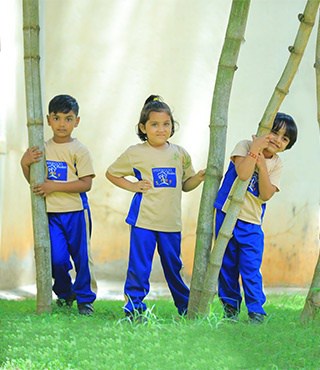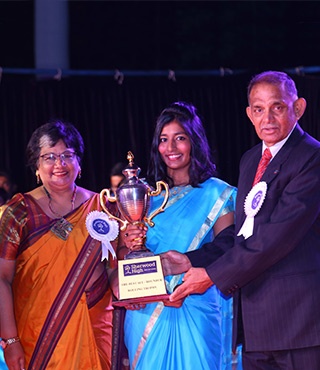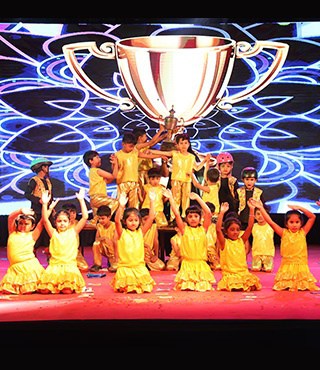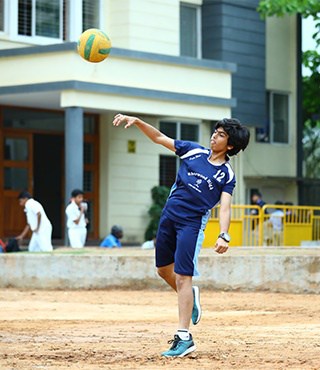

Parenting through Diversity: Nurturing Inclusivity and Cultural Awareness in Children
Parenting through Diversity: Nurturing Inclusivity and Cultural Awareness in Children
Understanding cultural diversity would go a long way in developing the spirit of together among young people
Diverse traditions, tongues, tastes and attire make up the fabric of vibrant India, regular exposure to this diversity is essential for children to understand the true essence of India
Humanity is known by its diverse and distinct cultural identities, each forming out of their shared beliefs, customs, traditions and social practices.
The natural, social and religious environments in which a group of people lives, play crucial roles in forming the distinct cultural identities. Engagement between groups also plays a role in influencing practices and shaping cultures.
Among the great nations of the world, India has historically been at the forefront of cultural, ethnic and natural diversity, easily qualifying as the capital of human confluence.
Traditions
Being home to one of the oldest continuously inhabited civilisations on earth, India has always been among the most culturally, spiritually and intellectually richest nations in the world. This also means it has always been a melting pot of thriving traditions.
Being strategically located and having attracted large waves of migrations throughout history, India has absorbed various cultures, traditions and talents like a great ocean.
This ability to absorb various strands of humanity and bring them out in forms unimaginable, makes India truly unique.
This amalgamation of trends and traditions regularly gave birth to new identities, adding new strands to the already rich tapestry of Indian cultural heritage.
The confluence of cultures keep adding new layers to the landscape of India, giving new dimensions to the expression of Indian art, craft, architecture as well as customs and languages.
ACTION: As we bring up new generations through our parenting and educational process, it is essential that the upbringing of our children reflects the cultural confluence of India.
Exposing our children to the cultural make up of the country will go a long way in helping them acknowledge and appreciate the diversity around them.
Diversity should not only be part of our regular dining table conversations and the larger discourse, but it should also be part of our action.
This can be done by collectively learning about other traditions as a family or by actively embracing various traditions around us.
Visits to villages that still practice ancient traditions as well as taking part in traditional festivals could be another way of nurturing diversity among children.
Tongue


Languages are great vehicles of cultural expression and there is no dearth of languages, tongues and dialects in India.
Indian constitution officially recognises 22 major languages, but according to government data, newspapers and magazines are published in 35 Indian languages.
Across different parts of this vast and multifarious nation, 72 languages are taught in schools, while radio channels beam their programmes to the remotest parts of the country in as many as 146 languages and dialects.
It is mind-boggling for a nation to have these many languages, but the story doesn’t end here.
Apart from the major languages that are recognised through newspapers, schools and radio, Indian census has recorded 1,576 languages and 1,796 mother-tongues. That makes up more than half of all the world’s languages.
ACTION: Surprisingly, most Indians don’t realise this diversity of languages in their practice. Apart from our own mother tongue or the official languages of the state, most of us don’t show any interest in other languages spoken around us. In fact, most of us tend to be indifferent to people who pursue a tongue different from ours.
Inculcating diversity would mean trying to learn and understand the diversity of expressions that we have around and encouraging the same among our children. Learning vernacular languages and dialects is a great way of gaining access into local cultures.
Taste
Another major marker of cultural diversity is the food habits and cuisines of various communities. Food habits in India are as diverse as the languages spoken here. In fact, it could be more diverse, as the culinary expressions vary significantly even within a region that speaks the same language.
In India, every household is a fortress of a unique taste and it is this taste that helps neighbours, relatives and friends bond with each other.
From dosa and dal to biryani and pulav, from kulcha and paratha to chapati and naan, from halwa and laddoo to peda and burfi, from samosa and pakoda to bhelpuri and poha, from kebabs and kormas to tikka and tandoori, the range of food items in India is endless. The taste not only changes from region to region or town to town, but even within different parts of a city.
ACTION: Imposing one’s narrow idea of food and taste has become a source of division and disagreement in the modern world. But, if appreciated, food can be a great leveller and an amazing vehicle to reach the hearts of people.
Trying various dishes while staying true to one’s cultural ethos could help nurture a culture of diversity at home. Among the most beautiful ways of inculcating diversity through food would be to share food with neighbours and friends.
Attire


To dress is an intrinsically human experience, as no other creature is known to dress.
Apart from being a tool of protection from the elements and a defender of modesty, clothing is also an expression of class, grace and status.
Dress has always been a great symbol of cultural expression from the earliest times and the sartorial expressions of India are as diverse as the country itself.
From lungies and lehngas to sarees and sarongs, from cholis and chudis to shararas and sherwanis, from kamees and kurtas to ghunghat and ghagras, from dhoti and topi to pajama and pagdi, not only does India have a treasure of countless attires, but the way each garment is worn also varies from place to place.
But, rapid globalisation and urbanisation has invaded the sartorial sense of most Indians, confining the clothing habits to the uniformity of jeans and shirts among both genders.
ACTION: This growing uniformity and blandness in the way we dress could be addressed by adopting a day in a week for ethnic wear, it could be a Sunday.
Our regular use of traditional attire could encourage our little ones to emulate and adopt.
One of the ways of encouraging traditional clothing would be gifting each other ethnic wear.
Purchasing local attires during travels to different parts of the country could also help in understanding and appreciating diversity in local fashion.
Art


Art is another intrinsic part of cultural expression, generally demonstrated by people in the way they work, create or celebrate.
Artistic expression of communities vary immensely in India in the way they weave their fabric, build their homes, create their paintings, compose their folklore, mould their utensils, shape their furniture and carve their sculptures.
Communities across the length and breadth of India have unique craft traditions that are greatly influenced by their local environment and naturally available material. They have also been influenced by exchange of ideas that have happened throughout history, with skilled migrants bringing their own techniques and traditions from different parts of the world.
ACTION: Art and craft present a range of opportunities to appreciate and inculcate cultural diversity. The opportunities that an Indian cultural ecosystem presents, irrespective of the region, are immense. All that needs to be done is for us to open our eyes and take note. From fabric and utensils to toys and furniture, Indian artisans craft some exquisite range of handmade products that are available for purchase.
Having handcrafted Indian products at home and using them regularly in our daily life could help us appreciate the life and efforts of thousands of artisans who dedicate their lives to maintain their ancient craft legacy.
Regular use of these products will not only help our children learn about the diversity but will also help them learn about the importance of acquiring traditional skills.
Communities
No nation comes even close to India in the range of communities it holds together. Every corner of this vibrant nation throws a pleasant surprise at you.
Just when you thought you knew India like you should know your home, it opens up new vistas of its myriad shades to you.
The distinction of Indian communities come in the way they dress and speak, what they eat and produce, what they believe in and practice; and how they live and celebrate.
ACTION: Diversity of communities is the real essence of India and the true understanding of this essence can come only by experiencing it.
The best way to learn about different communities is by visiting the villages, tribes, small towns and slums, where a range of communities live together.
Spending time in these varied spaces, engaging with various individuals and groups and having a closer look at how they live and make a living, would not only nurture the understanding of diversity, but would also build empathy and develop a spirit of togetherness among our children, upon which great nations are built!






